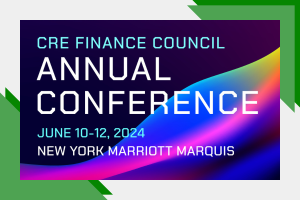Can software help the commercial mortgage market through troubled times? Will the industry ever see a paperless loan life cycle? This week, MortgageOrb spoke with Brian McCracken, president and CEO of North Shore Systems, a provider of commercial real estate finance technical solutions.
Q: What is the current status of the commercial mortgage industry’s slow move toward going paperless? Which steps of the loan life cycle are commonly managed electronically these days?
Brian McCracken: The main motivator in automation is volume, and the reason that the adoption of technology in the commercial space has been slow is that there is a relatively low volume of originations when compared to other financial transactions.
Moreover, the incentive to go the extra mile and make the entire loan cycle paperless has now almost completely vanished due to the crisis in the capital markets.
Underwriting is now done in Excel (if you can call that electronic). Servicing functions are the most common, as a servicing system is one thing that is basically a necessity due to the repetitive nature and calculations involved with accrual, billing and payments.
But very little on the origination processing side is automated. If the lender does not have a commercial origination system, then virtually every step is manual, requiring the property address, for example, to be re-typed 20 or 30 times during the origination process.
What is starting to happen now is electronic document storage and retrieval. Boxes used to store and manage loan files may be getting a little smaller as documents are scanned or received electronically (e.g., through e-mail, a disc or a USB drive). Images of properties are definitely now more in digital form.
One other common form of electronic function is loan submission, whether it be from a broker to a lender, a mortgage broker submitting a loan to a government-sponsored enterprise or a conduit lender supplying tapes to rating agencies or investors.
What happens at really large banks is that they end up with a bunch of redundant electronic steps, where, because of the islands of information caused by disparate systems, data must be electronically submitted into multiple internal systems.
Paper is still used in loan approval write-ups, because they have to be signed. A PDF copy may circulate, but e-signatures and electronic approval are still rare. Managers also like to have reports physically sitting on their desk, so that they can mark them up with a highlighter.
Of course, the closing docs and legal recording of the transaction continue to be paper-based, which is the primary roadblock to a seamless electronic life cycle of a loan.
Q: How has the current downturn affected brokers’ and lenders’ software needs? Are particular features requested or used more often now?
McCracken: While the downturn has reduced the immediate need for software – as there are few transactions – I think it makes the need for software more pronounced in the long run.
When transactions do pick back up, it is going to be more competitive, and it is all going to be about information. The regulatory activity brought about by the crisis will make it a priority for lenders to comply. They will have to start integrating systems better for a clearer picture of the pipeline and portfolio, and to be able to stress test individual deals, as well as complete portfolios. That requires software.
The integration with electronic document management systems is a recurring request. Lenders are looking for more off-the-shelf packages that will help them implement best practices, but unfortunately, it is not that simple. Anything that can keep them from re-keying data is very welcome, not just because of that method’s inefficiency, but also because of its susceptibility to mistakes.
I think a rules-based engine, which is common on the residential side, is now becoming important, as it can drive loan routing, underwriting, pricing, credit policies, approval and loan/portfolio exception reporting.
Q: For commercial loan servicers in particular, what are the most acute pressures right now, as delinquencies grow? How might software alleviate these challenges?
McCracken: Portfolio analysis and surveillance will be key. In particular, the ability for servicers to stress their portfolios and project out changing conditions – such as changing interest rates, vacancies, cap rates, rents, etc. – is vital.
Doing so starts with a good database. The software has to capture the data. Consequently, software that automates the process and makes this job easier is more likely to successfully capture the data flowing through the organization during the process. Again, a rules engine is the ultimate tool for analyzing data and triggering appropriate events or conditions.
Q: How much do you think a lack of information accessibility and transparency might have contributed to the current crisis?
McCracken: The current crisis had its roots in the residential housing market, where I think data was very visible and accessible, but no one wanted to really look at it. In my opinion, greed was the biggest contributor. There may have been activities that could have been watched a little more closely, so maybe in that sense.
How can information flow be improved? Smarter software that, again, will actually make all steps of the process easier and has built-in cognition of conditions and loan attributes, with the ability to mesh with the human process of CRE finance.
Q: With all the rapid advancements occurring in technology and software in general, what is on the horizon for mortgage technology? Any predictions?
McCracken: End-to-end rule-based systems are the technology of the future. Workflow systems will have integrated electronic document capture and management. Broker software and services will become smart-phone based.
The cutting-edge technology like e-mortgages and going paperless will continue to be driven by the residential mortgage side. Also, changes in the way that business is done in the future as a result of the crisis will drive changes in technology.
Cloud computing and the use of application service providers are strong trends now that may become part of the mortgage technology landscape. I’d say the biggest determining factor will be the degree and speed with which industry standards like MISMO are adopted. Data standards are an absolute requirement for any overhaul resulting in greater efficiency and transparency in the industry.
Unfortunately, with folks just being in survival mode for a while, I see this development continuing to be a low priority for most. Only the smartest organizations will see the light and realize that technology is the best way to prepare for the future, from an efficiency/cost, compliance and competitive standpoint.



